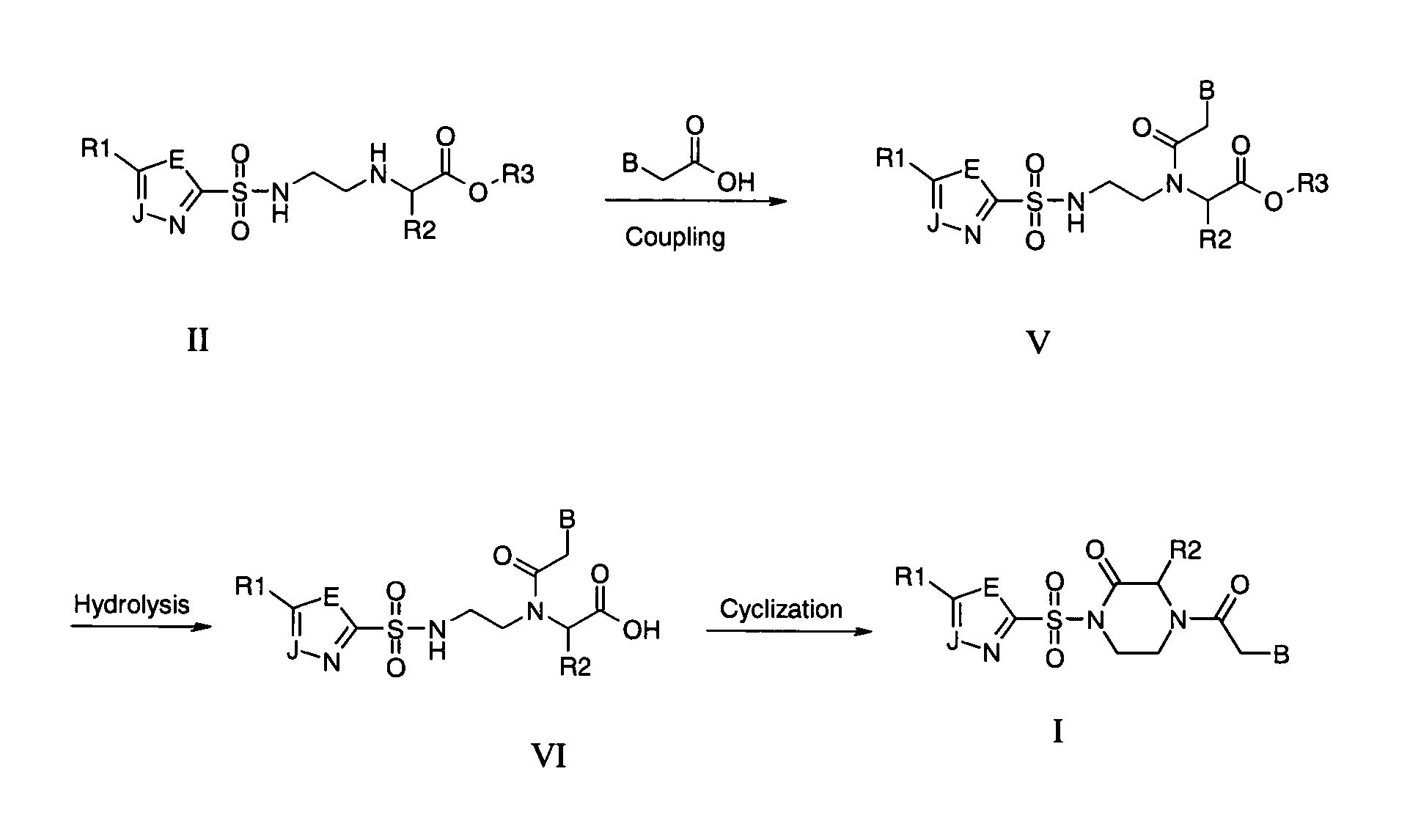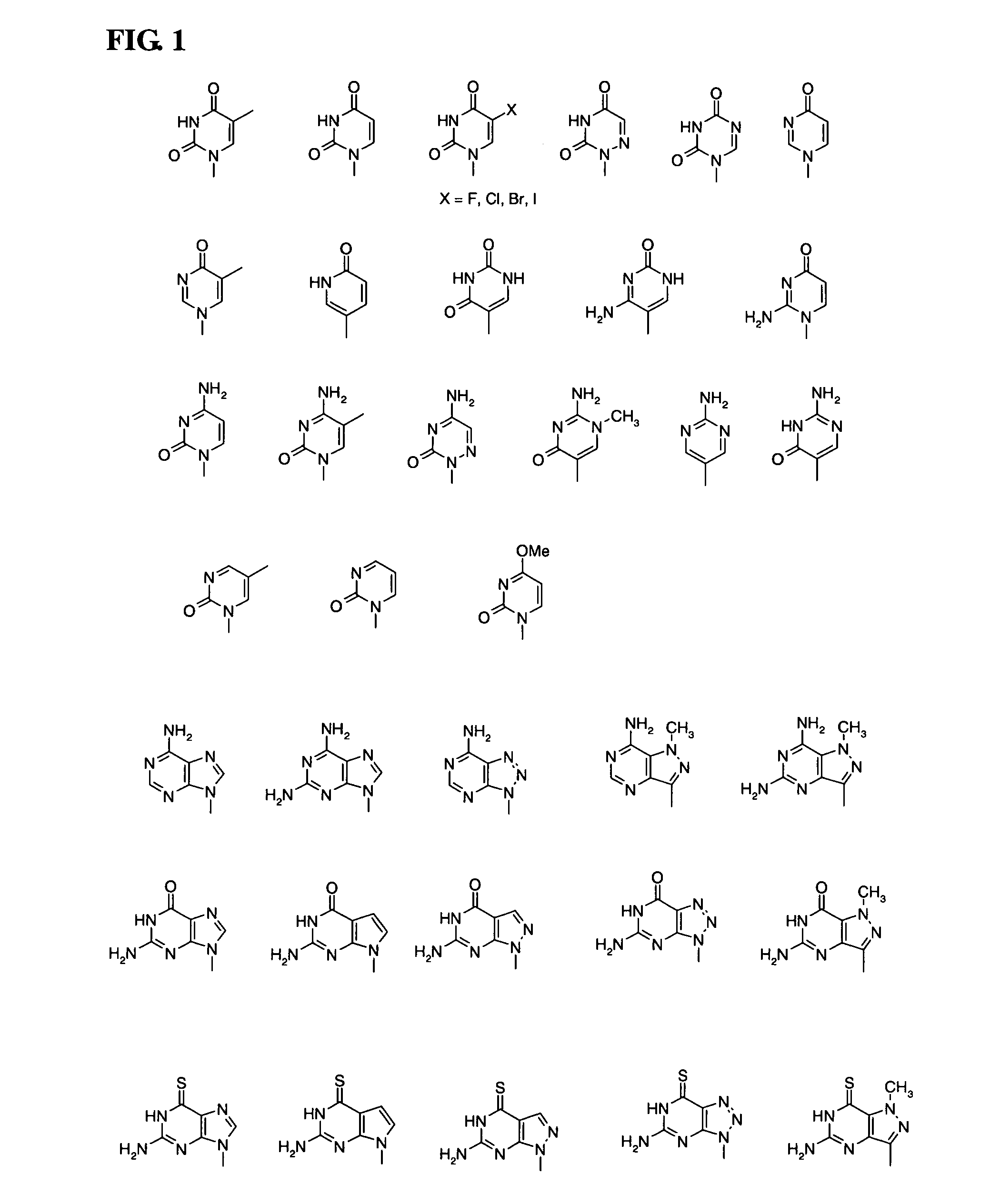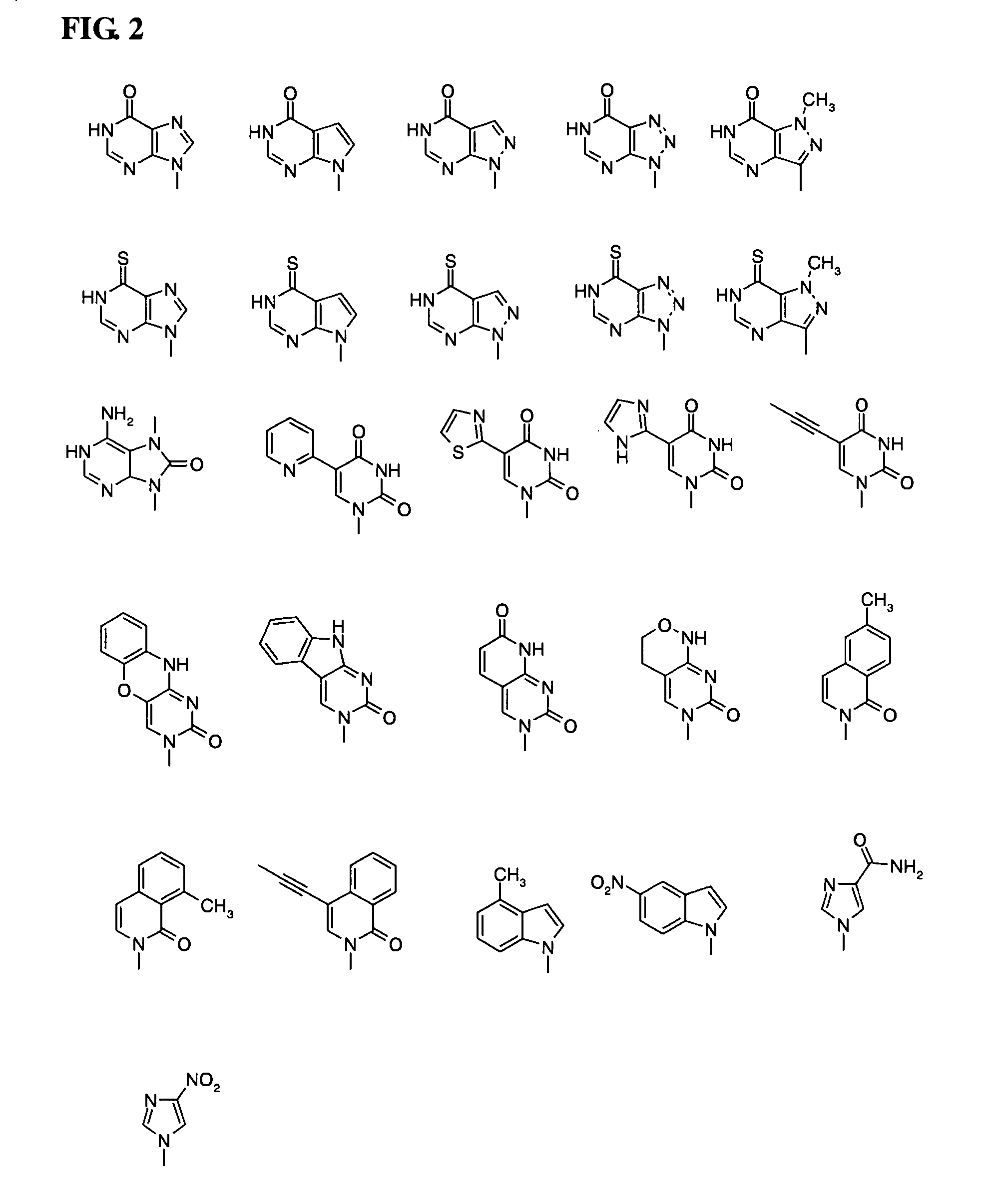PNA monomer and precursor
a monomer and precursor technology, applied in the field of monomers, can solve the problems of inconvenient use, incompatible strategy with the synthesis of many types of modified pna oligomers, and inability to commercially embrace the use of hazardous acids, such as hf or trifluoromethanesulfonic acid, and achieves convenient application, high yield, and convenience.
- Summary
- Abstract
- Description
- Claims
- Application Information
AI Technical Summary
Benefits of technology
Problems solved by technology
Method used
Image
Examples
example 1
N-{2-[5-(4-Chlorophenyl)-1,3,4-thiadiazole-2-sulfonylamino]-ethyl}-glycine ethyl ester
[0247]To a solution of N-(2-aminoethyl)-glycine ethyl ester 2HCl (1.4 g, 6.4 mmol), prepared as described by Will (D. W. Will et al., Tetrahedron, 1995, 51, 12069.), in dichloromethane (50 mL) was added 5-(4-chlorophenyl)-1,3,4-thiadiazole-2-sulfonyl chloride (1.5 g, 5.1 mmol) at 0° C. Then triethylamine (2.7 mL) was slowly added. The resulting reaction mixture was stirred for additional 2 h. at room temperature and washed with water (30 mL). The organic layer was dried over MgSO4 and filtered. The filtrate was concentrated, followed by column chromatography to give the title compound (1.1 g, 2.7 mmol, 53%) as a solid. 1H NMR (500 MHz; DMSO-d6) δ 8.08 (d, 2H), 7.66 (d, 2H), 4.03 (q, 2H), 3.26 (s, 2H), 3.15 (t, 2H), 2.64 (t, 2H), 1.14 (t, 3H).
example 2
N-[2-(5-Phenyl-1,3,4-thiadiazole-2-sulfonylamino)-ethyl]-glycine ethyl ester
[0248]The title compound was synthesized by the reaction of N-(2-aminoethyl)-glycine ethyl ester 2HCl with 5-phenyl-1,3,4-thiadiazole-2-sulfonyl chloride as per the procedure of example 1. 1H NMR (500 MHz; DMSO-d6) δ 8.05 (d, 2H), 7.60–7.56 (m, 3H), 4.02 (q, 2H), 3.26 (s, 2H), 3.16 (t, 2H), 2.64 (t, 2H), 1.14 (t, 3H).
example 3
N-{2-[5-(2,5-Dichlorophenyl)-1,3,4-thiadiazole-2-sulfonylamino]-ethyl}-glycine ethyl ester
[0249]The title compound was synthesized by the reaction of N-(2-aminoethyl)-glycine ethyl ester 2HCl with 5-(2,5-Dichlorophenyl)-1,3,4-thiadiazole-2-sulfonyl chloride as per the procedure of example 1. 1H NMR (500 MHz; DMSO-d6) δ 8.27 (s, 1H), 7.80 (d, 1H), 7.75 (d, 1H), 4.03 (q, 2H), 3.35 (s, 2H), 3.21 (t, 2H), 2.71 (t, 2H), 1.15 (t, 3H).
PUM
| Property | Measurement | Unit |
|---|---|---|
| Tm | aaaaa | aaaaa |
| Tm | aaaaa | aaaaa |
| temperature | aaaaa | aaaaa |
Abstract
Description
Claims
Application Information
 Login to View More
Login to View More - R&D
- Intellectual Property
- Life Sciences
- Materials
- Tech Scout
- Unparalleled Data Quality
- Higher Quality Content
- 60% Fewer Hallucinations
Browse by: Latest US Patents, China's latest patents, Technical Efficacy Thesaurus, Application Domain, Technology Topic, Popular Technical Reports.
© 2025 PatSnap. All rights reserved.Legal|Privacy policy|Modern Slavery Act Transparency Statement|Sitemap|About US| Contact US: help@patsnap.com



